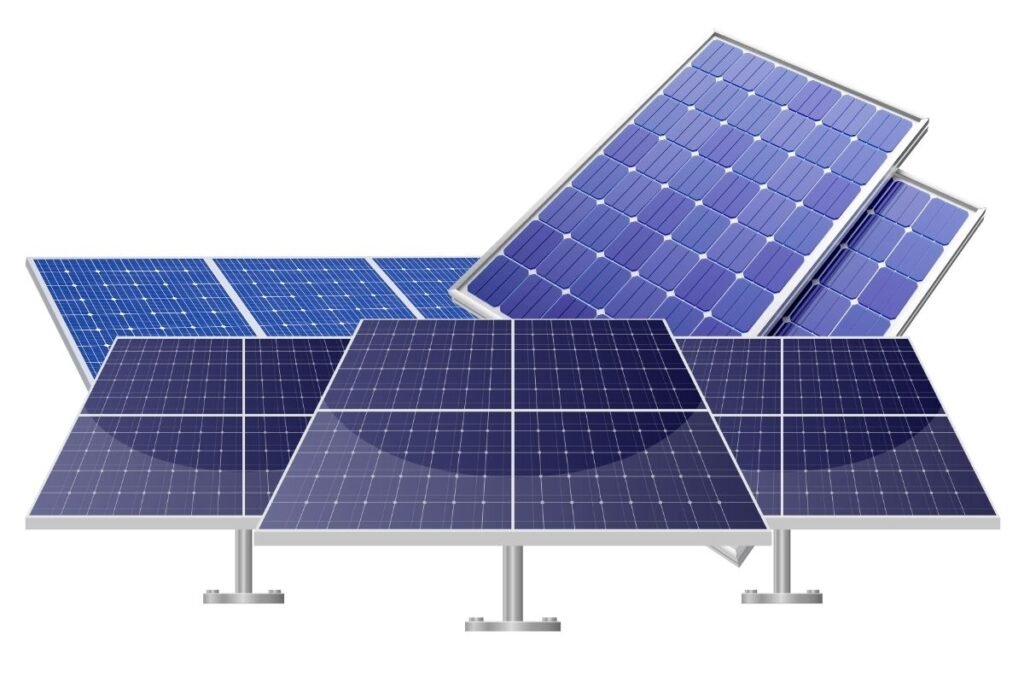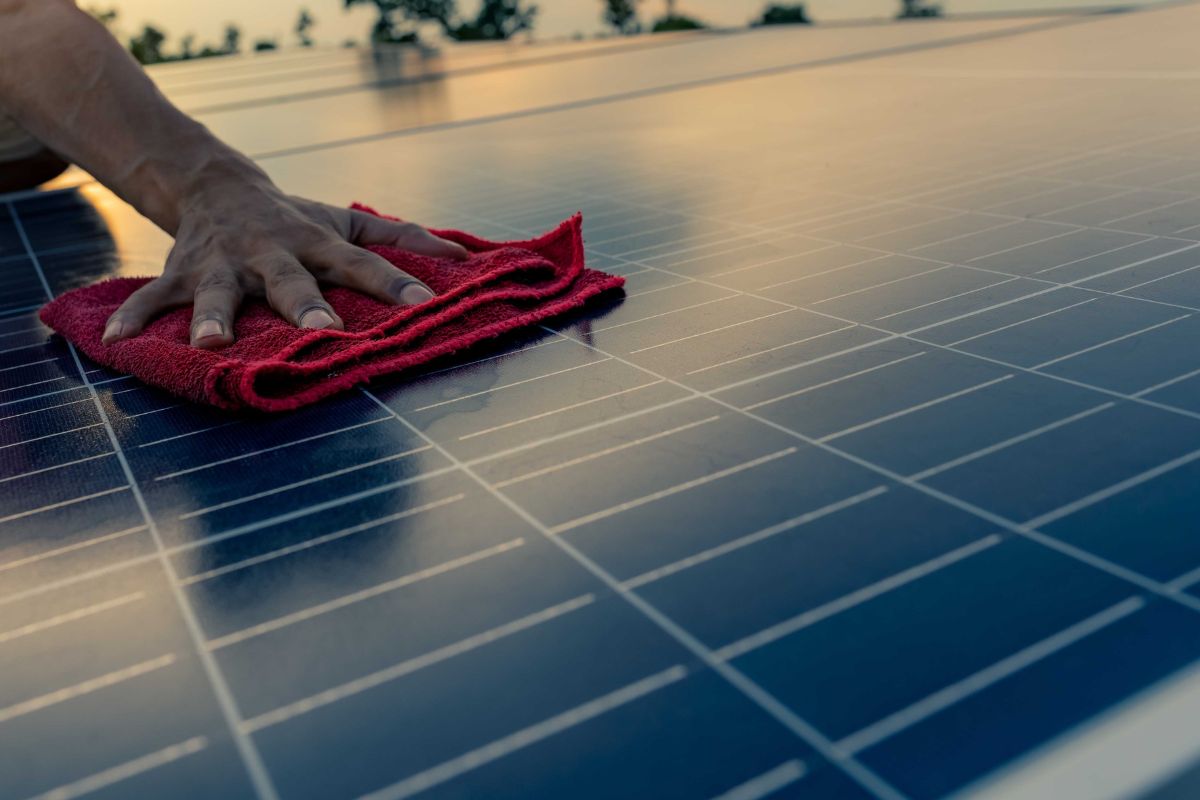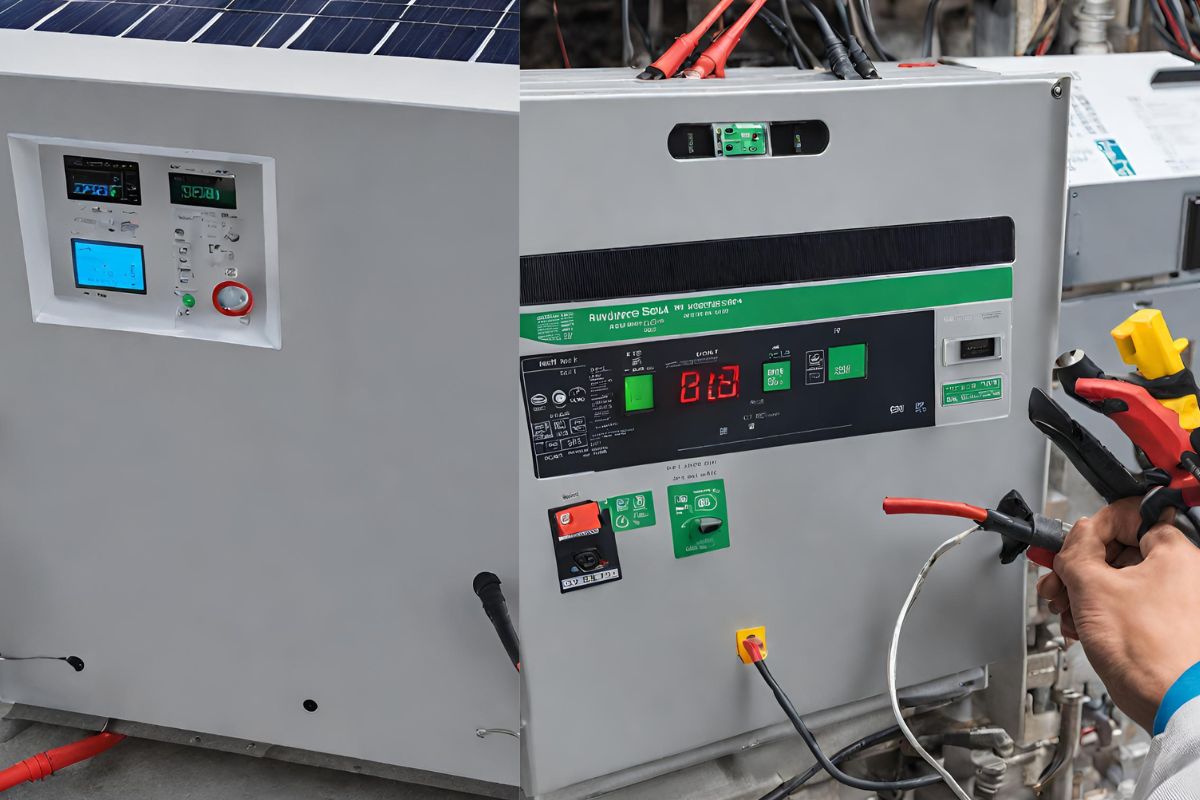Bifacial solar panels vs monocrystalline solar panels are two types with popular choices in the renewable energy industry.
Bifacial solar panels are a great type of solar panel that generates electricity by absorbing sunlight from both sides, increasing overall energy production.
On the other hand, monocrystalline solar panels are constructed of a single crystal structure and are known for their great efficiency but can only capture sunlight from one side.
They also have their unique features and benefits. Here are even the bifacial solar panels’ advantages and disadvantages.
However, the choice between the bifacial and monocrystalline solar panels is based on what you want them for.
Continue reading to discover detailed comparisons.
What Are Bifacial, Monocrystalline And Polycrystalline Solar Panels?
Monocrystalline and polycrystalline are the two most common types of home solar cells produced with pure silicon.
Silicon is found in large amounts on the earth and can be used to produce many useful items, including glasses and metals.
All the solar panels out there are made from silicon cells. Silicone is the second most prevalent mineral element in the earth’s crust that is collected from mines in the form of quartz.
To get monocrystalline or polycrystalline cells will depend on how you subject the silicon, which will determine the product results.
Silicon is used to make the two distinct types of solar panels, which share many properties.
There are a lot of steps by which the transformation processes in converting silicon into a solar module.
First, the silicon is extracted and refined from the mine.
The material is subsequently melted in crucibles to form ingots, which can be cylindrical for monocrystalline silicon or square for polycrystalline silicon.
In the third phase, the ingots are sliced into thin sheets, yielding wafers, a substrate on which several chemical operations are carried out until solar cells are formed.
Finally, these solar cells, which are incredibly thin, are integrated and joined to form part of the solar panels.
Bifacial Solar Panels
Bifacial solar panels are one of the most recent photovoltaic industry advancements.
In reality, bifacial cells, unlike monofacial cells, are responsive to light on both sides.
Aluminum is used to cover the rear surface of monofacial solar cells.
The rear section of a bifacial plate is constructed of a transparent sheet or double-tempered glass so that both sides receive the sun’s rays for energy generation.
Its cells are typically monocrystalline or, in rare circumstances, polycrystalline, as in monofacial panels.
Unlike mono-facial solar panels with an opaque back sheet, bifacial panels have a transparent and double-tempered glass back sheet.
Monocrystalline Solar Panels
The monocrystalline solar panels comprise single silicon single-crystal Si, also called mono-Si.
Monocrystalline has higher efficiency and performance than polycrystalline solar panels, which generate more energy with the same amount of sunlight.
The crystal is treated and turned into an ingot, which looks like a cylinder during the making process.
It makes room for more ingots on a panel, and silicon ingots are cut into small discs or silicon wafers, which are then shaved into eight-sided shapes.
After that, these plates are cut into solar cells and put into panel units.
When you use single crystals, the Monocrystalline Panels instead of regular solar panels, they work more efficiently and give your home more electricity.
Polycrystalline Solar Panels
The polycrystalline solar panel comprises cells with multiple crystallized silicon particles. The price is the biggest difference and advantage compared to the monocrystalline solar panel.
However, polycrystalline solar cells are made up of many silicon crystals that are broken up. Some of these bits are silicon lost during the mono panel process.
There are likely flaws on the silicon pieces’ sides, making them less active compared to the monocrystalline solar panel.
Multicrystalline silicon, as they are also called, has a different color because it comprises small silicon crystals. A flake-like grain can be seen in the cells of the polycrystalline silicon crystal.
Quick Summary:
In this article, I will talk more about polycrystalline and monocrystalline solar panels because I have discussed bifacial solar panels in other articles a lot.
Bifacial solar panels is able to generate electricity from both sides, absorbing direct sunlight and sunlight reflected from the ground or other surfaces, improving overall energy production.
Monocrystalline solar panels are noted for their excellent efficiency and sleek black look due to their single-crystal structure.
While polycrystalline solar panels are made from numerous silicon pieces, they are a more cost-effective choice with somewhat lower efficiency than monocrystalline panels.
You can read everything about the bifacial solar panels right here.
Which Is The Better Solar Panel, Monocrystalline Or Polycrystalline
Monocrystalline solar panels are currently the ones that are most widely used, and they have better performance.
However, it would be best to find out which solar panel is better, monocrystalline or polycrystalline.
Both monocrystalline and polycrystalline solar panels offer unique advantages and disadvantages.
Monocrystalline panels offer better efficiency than polycrystalline panels due to the regularity and alignment of the silicon in monocrystalline solar cells.
However, this higher efficiency comes at a higher price because the panels are generally more expensive to produce and purchase.
Polycrystalline solar panels have a less complex manufacturing process.
The silicon is less pure and does not need to be aligned, which results in cheaper pricing for consumers and installers.
Let’s see some of the pros and cons of these solar panels:
Pros and Cons of Polycrystalline Solar Panels
Pros
- Polycrystalline are cheaper than monocrystalline panels.
- Less expensive to set up and maintain
Cons
- The Polycrystalline panels are more extensive, take up more room, are less efficient at producing energy, and are less sustainable.
Pros and Cons of Monocrystalline Solar Panels
Pros
- Energy production is extremely efficient.
- Black panels complement darker shingles.
- Absorb more light
- Better performance in hot weather
- Panels take up less space.
Cons
- Less sustainable production processes are more expensive.
What Is The Difference With monocrystalline and polycrystalline solar panels?
The most crucial difference between the two is how pure the silicon is, which means that the two solar panels will work very differently regarding self-consumption.
We can see some of the differences in the making process. As we have seen before, silicon cells make these panels.
Ingots are round pieces of silicon that are used to make monocrystalline silicon cells.
Cutting all four sides of the cylinder wastes a lot of silicon and makes sheets with smooth ends.
And because of this, the crystals are very pure, which makes each cell work very well.
To make polycrystalline solar panels, the silicon block is heated without any flaws being taken out, and then it is put into a square mold.
As a result, all crackers are square, but some of them are not pure. The polycrystals that give the panel its name could be better at turning sunlight into energy.
The 60-cell monocrystalline panel (1.65m2) puts out 330 wp, while the polycrystalline solar panel only produces 270 wp.
This is because the levels of purity are different. PV panels with 72 cells (2m2) can make between 400wp and 330wp.
These numbers show that monocrystalline panels make 20% more energy when sunny and 25º, but polycrystalline panels’ numbers get worse when the temperature rises.
When looking at electrical specifications, you will find that the differences are very simple, and you may need to notice them.
When looking at electrical specifications, you will find that the differences are very simple, and you may need to notice them.
Monocrystalline solar cells
Single cells are characterized by their symmetrical appearance, which indicates the purity of silicon crystals, and their dark blue color, with rounded edges.
The single-panel cells are made of silicon alloy cut into strips, and you can see that the edges of the cells are not aligned, giving them a distinctive appearance.
Polycrystalline solar cells
Polycrystalline PV panels consist of several solar cells formed from silicon and processed during manufacturing.
They are lower in cost than monocrystalline cells and are usually blue
Polycrystalline panels have multiple crystals, while monocrystalline solar panels are made of a single pure crystal, making them more efficient.
Another area is their cost and color; the polycrystalline panels are blue and cost less, and the monocrystalline is more expensive with black color.
Characteristics Of Monocrystalline Solar Panels And Polycrystalline Solar Panels
Monocrystalline silicon solar cells are highly pure monocrystalline silicon rods as raw materials, with a purity requirement of 99%.
The photoelectric conversion efficiency is about 15 %, while the high efficiency is 25 %.
This is the highest photovoltaic conversion efficiency among existing types of solar cells, but the production cost is very high, so it cannot be widely used.
Because monocrystalline silicon is generally packaged with reinforced glass and waterproof resin, it is sturdy and durable, with a service life of up to 15 and 30 years.
Properties of polysilicon solar cells
Polysilicon solar panels are manufactured similarly to monocrystalline silicon solar cells.
Still, the photoelectric conversion efficiency of polysilicon solar cells is much lower, and the photoelectric conversion efficiency is about 10 %.
Compared with monocrystalline silicon solar cells, production cost is lower, material manufacturing is simple, saving energy consumption, and the overall production cost is low.
In addition, the lifespan of polysilicon solar cells is shorter than
How Are Monocrystalline Solar Panels Manufactured?
Silicon alloy making
The first step toward making monocrystalline solar panels involves extracting pure silicon from quartzite with silica sand (SiO2) to make metallic silicon.
Special furnaces are used for this purpose. Carbon is melted at over 1400°C, producing 99% pure silicon.
When the purification process is finished, the 100% pure silicon is transformed into a single silicon ingot.
Silicon alloy depends on temperature gradients, cooling rates, and rotation speeds.
Making silicon wafers
This single silicon ingot is cut into thin strips as small as 1 mm or 0.0393 inches using a wire saw.
These chips are washed, cleaned, and polished to remove all dust particles and scratches.
Final Thought
You already know that traditional solar panels are monofacial, with solar cells on only one side of the panels.
Bifacial solar panels feature solar cells on both sides and are primarily used in an open space.
But especially in particularly snow open field locations, where light snow intensely reflects sunlight.
When it comes to the performance of PV modules, monocrystalline modules are at the forefront.
The biggest disadvantages of polycrystalline photovoltaic cells are:
- Their lower efficiency.
- The associated higher space requirement.
- They have a higher weight than polycrystalline modules.
The choice all comes down to what you want to use for power. You can read everything about the bifacial solar panels right here.



